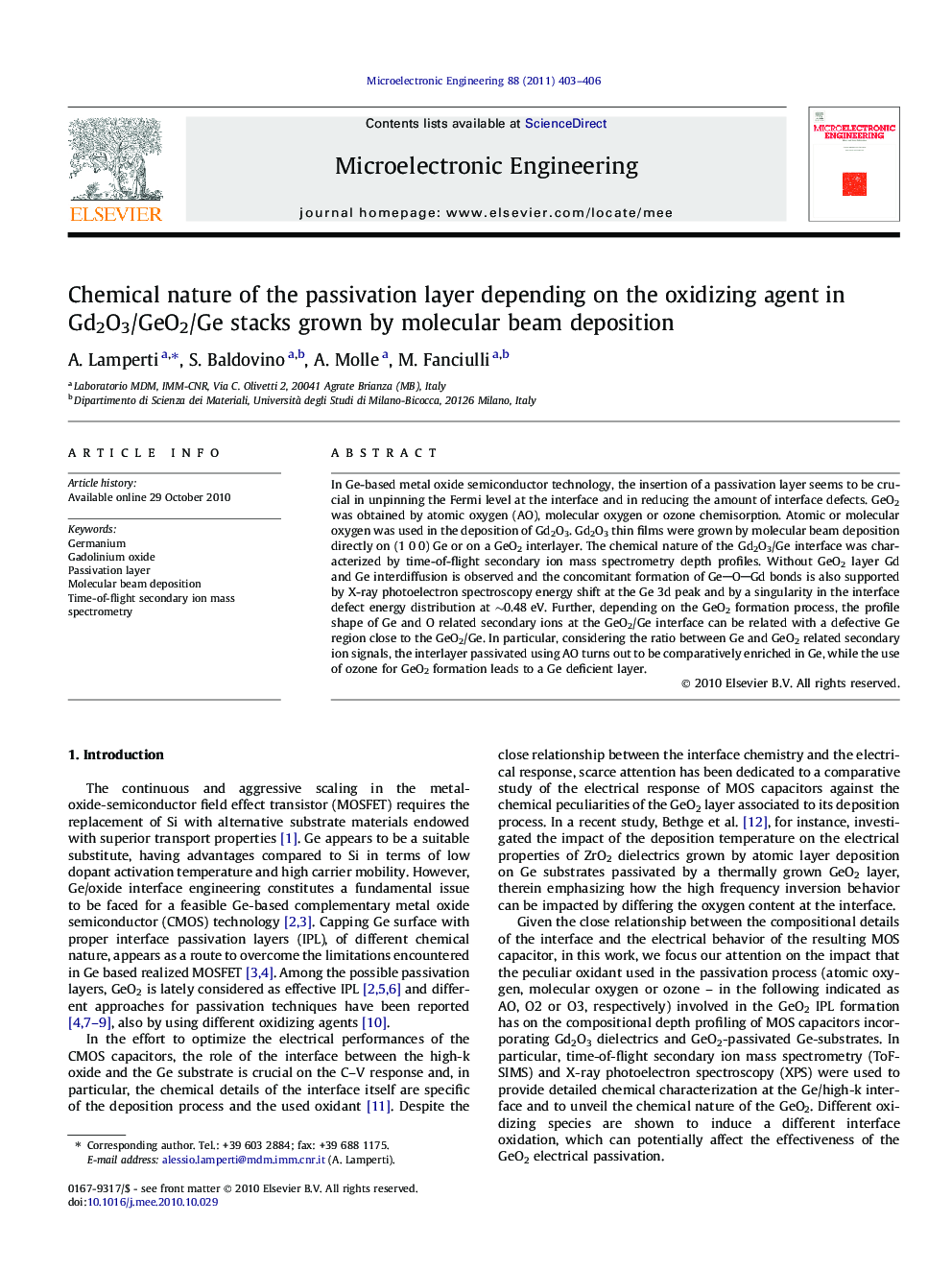| Article ID | Journal | Published Year | Pages | File Type |
|---|---|---|---|---|
| 544649 | Microelectronic Engineering | 2011 | 4 Pages |
In Ge-based metal oxide semiconductor technology, the insertion of a passivation layer seems to be crucial in unpinning the Fermi level at the interface and in reducing the amount of interface defects. GeO2 was obtained by atomic oxygen (AO), molecular oxygen or ozone chemisorption. Atomic or molecular oxygen was used in the deposition of Gd2O3. Gd2O3 thin films were grown by molecular beam deposition directly on (1 0 0) Ge or on a GeO2 interlayer. The chemical nature of the Gd2O3/Ge interface was characterized by time-of-flight secondary ion mass spectrometry depth profiles. Without GeO2 layer Gd and Ge interdiffusion is observed and the concomitant formation of GeOGd bonds is also supported by X-ray photoelectron spectroscopy energy shift at the Ge 3d peak and by a singularity in the interface defect energy distribution at ∼0.48 eV. Further, depending on the GeO2 formation process, the profile shape of Ge and O related secondary ions at the GeO2/Ge interface can be related with a defective Ge region close to the GeO2/Ge. In particular, considering the ratio between Ge and GeO2 related secondary ion signals, the interlayer passivated using AO turns out to be comparatively enriched in Ge, while the use of ozone for GeO2 formation leads to a Ge deficient layer.
